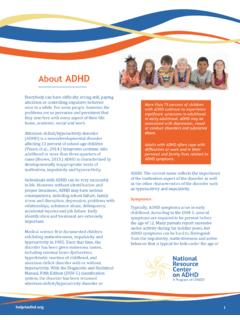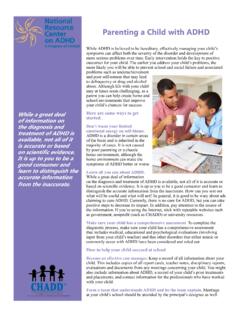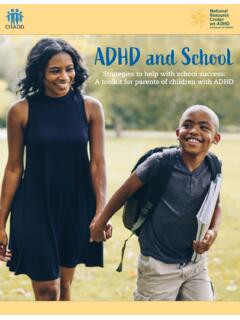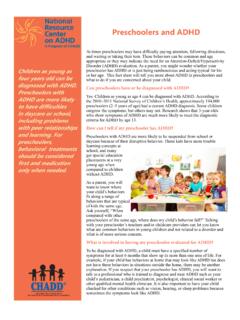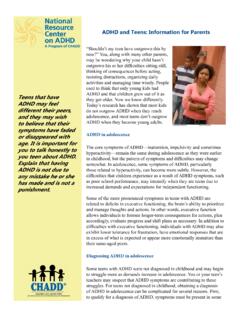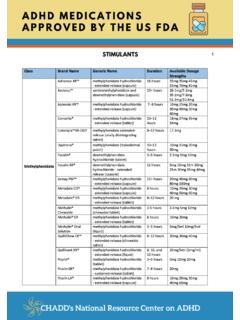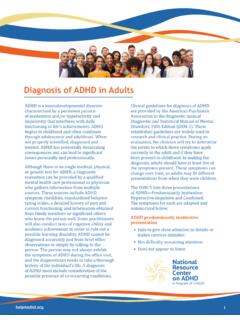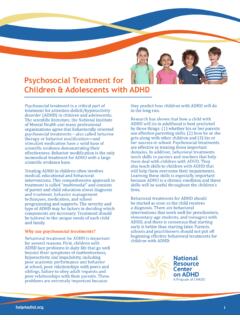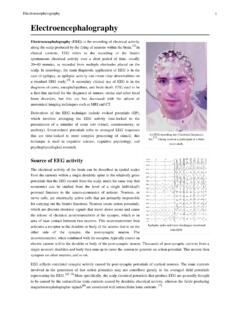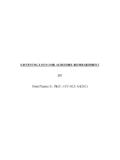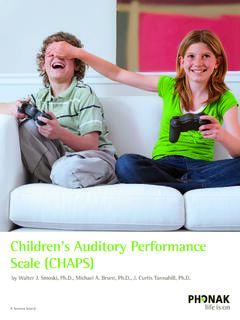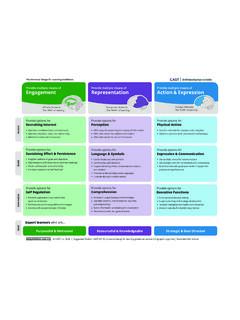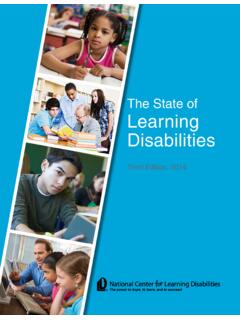Transcription of The Exercise Prescription for ADHD - CHADD
1 AS MANY pArENtS AND ADultS WItH ADHD KNoW, making treatment decisions can be difficult. On one hand, Prescription medications may help improve symptoms like hyperactivity, inattentiveness, and impulsivity. Unlike antibiotics taken for an infection, however, these medications will not suddenly fix all of your or your child s when the medicine is working, your child might still struggle with forgetfulness, emotional problems, and social awkwardness, or you might find yourself dealing with disorganization, distractibility, and relationship difficulties. It is important to know, though, that ADHD medications are not the only treatment option. There is now a consensus among experts that regular Exercise is one of best things you can do to treat starts in the brainADHD stems from a glitch in the brain s attention system, which is made up of an interconnected web of neurons that are spread throughout various areas of the brain, from areas that control arousal, motivation, and reward, to those involved in executive function and movement.
2 These attention circuits are regulated by neurotransmitters such as norepinephrine and dopamine, which help usher messages from one part of the system to speaking, the problem for people with ADHD is that communi-cation within their attention system is often patchy and disconnected (Maza-heri, 2010, and Pliska, 1996). Therefore, the goal of ADHD treatment is to fill these gaps in order to decrease distractibility and any other symptoms that might be present. And this is just what Exercise recent study published in the Journal of Attention Disorders ( Ve r r e t , 2012) showed that doing moderate to vigorous intensity Exercise forty-five minutes a day, three times a week, for ten weeks improved cognitive func-tion and behavior in children with ADHD.
3 Specifically, it seemed that the children who followed the Exercise program were more efficient at processing information, as demonstrated by faster speeds of visual research and better sustained auditory has similar effects as medicationsAlthough most of us equate Exercise to changes in our waistline, physical activity also has a profound effect on the brain. Early brain and Exercise research has indicated that Exercise results in the growth of new nerve cells (neurogenesis), increases in the levels of several different neurotransmit-ters, and vascular (new blood vessel) adaptations (van Prag, 2009). In fact, scientists have found that moderate to intense Exercise actually provokes changes in many of the same neurochemicals and brain structures as popular Prescription ADHD mentioned previously, the neurotransmitters norepinephrine and do-pamine play a major role in regulating the attention system.
4 As a result, they are the most common chemicals targeted by ADHD medications. However, increasing norepinephrine and dopamine is also the broad scientific explana-tion for Exercise s profound effect on the ADHD you walk, run, bike or swim, your brain releases lots of these neurotransmitters, which increases the attention system s ability to be regular and consistent by spurring the growth of new receptors in certain areas of the brain. This has many good effects like reducing the need for new stimuli and increasing alertness. John J. Ratey says in his book Spark: The Revolutionary New Science of Exercise and the Brain that Exercise in-creases dopamine levels in the rat equivalent of the basal ganglia (which is responsible for the smooth shifting of the attention system and the key The Exercise Prescription for ADHD by michael lara, mdMichael lara, MD, is a board-certified psychiatrist who practices in Belmont, California.)
5 He combines his interests in nutrition and Exercise therapy with traditional therapies to treat a spectrum of mood, anxiety, and cognitive disorders. although most of us equate Exercise to changes in our waistline, physical activity also has a profound effect on the Exercise Prescription for ADHD binding site for methylphenidate) by creating new dopamine s all well and good for the rats, but what sort of effect can this have in humans? Ratey described the results of one study that examined the effects of Exercise in kids with ADHD by using motor-function tests, which provide indirect measures of dopamine activity. In boys, rigorous Exercise improved their ability to stare straight ahead and stick out their tongue, indicating better motor reflex inhibition.
6 Girls, on the other hand, didn t show any improvement, which may be because of a lower incidence of hyperactivity in girls. However, both the boys and the girls improved according to another measure related to the sensitivity of dopamine synapses, although boys fared better after vigorous Exercise and girls after moderate Exercise . Another common symptom in children with ADHD, fidgetiness, has been linked to an overactive cerebellum. While recent studies have shown that ADHD drugs that elevate dopamine and norepinephrine bring this area back into balance, Exercise has also been shown to be effective, and the more complex the Exercise , the researchers can t teach lab rats to do martial arts or ballet, but they did look at the neurochemical changes in their brains after periods of acrobatic Exercise , the closest parallel to these sorts of activities that you can replicate in a lab.
7 Compared to rats running on a treadmill, the rats that practiced complex motor skills had more dramatic improvements in levels of brain-derived neurotrophic factor (BDNF), which suggests that growth is happening in the what about adults with ADHD? Unfortunately, less research has been done in this group of patients. However, research into cognitive decline has shown that Exercise continues to positively affect the brain well into old type of Exercise is best?While most clinical studies researching the effects of Exercise on ADHD have utilized running on treadmills, you don t have to be a marathoner, or even a jogger, to benefit from Exercise .
8 In fact, challenging the body as well as the brain with complex activities like martial arts, ballet, ice skating, gymnastics, rock climbing, and mountain biking seems to have a greater positive impact on children with ADHD than aerobic Exercise small, unpublished study by a graduate student at Hofstra University (Morand) found that boys with ADHD who participated in martial arts twice a week had greater improvements in behavior and performance on a number of different measures than those who participated in a typical aerobic Exercise program (although Exercise in general led to dramatic im-provements compared to nonactive controls). The kids involved in martial arts finished more of their homework, were better prepared for class, showed greater improvement in their grades, broke fewer rules, and jumped out of their seats less often.
9 Why is this? Experts don t know for sure, but it is probably due to a number of different factors. According to Ratey, The technical movements inherent in any of these activities activate a vast array of brain areas that control balance, timing, sequencing, evaluation consequences, switching, error correction, fine motor adjustments, inhibition and of course intense focus and concentration. And, of course, these activities also generally take place the aerobic range, which would boost cognitive abilities and attention in a similar manner to the body as well as the brain with complex activities like martial arts, ballet, ice skating, gymnastics, rock climbing, and mountain biking seems to have a greater positive impact than aerobic Exercise June 201223features of the adhd brainfeatures incorporated into an adhd Exercise programNeed for structureStructured workouts that are planned and part of a daily routine.
10 Done with a personal trainer or in a group for varietyAllow for variety within the structured Exercise program: Variety of functional movements, including squats, lunges, upper body push/pulls, twists, dead lifts Incorporate resistance-training, cardiovascular training and acquisition of new functional to incorporate new skillsIncorporate new functional movementsNeed for a system to measure outcomesDefine a specific, measurable goal to keep in mind; for example, to complete a 10K most important thing to consider when starting an Exercise program is to find something you enjoy doing or that your child enjoys doing. That way you or your child will stick with it.

